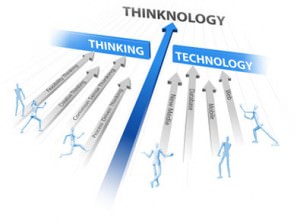How To Structure Your Software Development Team
The software development process requires a great and diverse team, where each team member contributes to the project. To properly structure your software development team, you should know what the main roles are and what responsibilities they should have.
We would like to share some main approaches to structuring your team and the team’s main roles.
The traditional approach in structuring the team
The traditional team is the team where each person contributes to the project and possesses the necessary skills. These teams are usually responsible for the continuous development of an entire project or an individual feature. This is the most common project team structure for outsourcing software development company.
Pros
- Each team member is well versed in the product, so they can improve it as a whole.
- Each person is competent enough to do their job without dependence on others.
Cons
- Since no one has a specific knowledge, it is sometimes necessary to bring in a new team member in the middle of a project.
The dedicated approach in structuring team
The “dedicated” product team is made up of super-secret skill sets who are skilled at solving little problems. Each professional is in his niche and therefore bears full responsibility for the element of the project. This arrangement is also fairly common for software development teams.
Pros
- Deep knowledge of every element of the project.
- The team can build complex high-quality systems very quickly.
Cons
- Since everyone works individually, there is a chance that the components do not fit from the first iterations.
- Communication gaps are possible due to a lack of general knowledge.
A hybrid approach in structuring team
A “hybrid” project team structure is essentially a combination of generalists and specialists. Such teams work on the project as a whole, but they can narrow the range of their tasks if necessary. The hybrid approach is the best of both worlds.
Pros
- Both specialists create individual components and generalists who monitor the integration of the system.
- The development process is as efficient as possible.
Cons
It can be difficult to coordinate people with different workflow approaches.
- Building a hybrid team is time-consuming and very expensive.
- Basic software development team structure
Business Analyst (BA)
This is the one who is responsible for setting goals, analyzing and documenting the underlying processes and systems, and ensuring consistency between the business model and technologies. BA is everything for everyone. They assess what works and what doesn’t work and set the direction for business development.
Project Manager (PM)
This person is responsible for planning and execution. The PM is responsible for getting the job done. They also take care of building relationships between the client and the various parts of the organization. Project managers oversee all processes, delegate tasks to other team members, and ensure that everyone does not go astray.
Developers (Front-end / Back-end)
Developers are responsible for the development process, in other words, coding. While the front-end designers are working on the product’s customer-centric elements, the back-end designers care about the functionality, which is all the user doesn’t see.
UX designer
The designer is someone who is responsible for the visual part, and product design. Also, designers ensure that all functions solve people’s problems and achieve business goals. Namely, they determine how the product will look and how it will work. The main focus of a UX designer is functionality and usability.
Quality Assurance Engineer (QA)
QA is the one who tests the product to make sure it performs well, meets quality standards and customer requirements. QA is like the ultimate editor that pays close attention to the smallest details. They catch bugs early so the team can fix them before they reach users.
Marketing Specialist/Growth Hacker
Marketing professionals work with a product in the pre-and post-development stage and are necessary to develop each product. This is the person who then grows the project.
Conclusion
This is a basic list of potential roles and responsibilities for the software development team. You can also add to the team DevOps or marketers, but the most important roles are distributed with developers, designers, CTO, or project managers.








